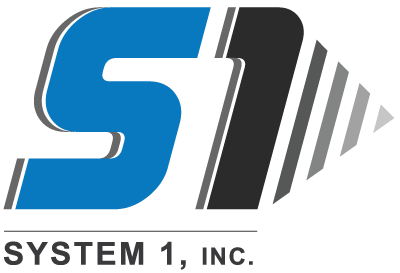Program and Process Optimization
Today’s organizations are operating in a rapidly evolving cyber environment where threats and vulnerabilities appear with bewildering speed and frequency. In such conditions, cybersecurity program and supporting processes that exceeded expectations when established can quickly fall out of synch with both the threat posture and risk appetite of the business. System 1’s cybersecurity professionals can provide the independent assessment and redesign required to resynch your program and its processes to the firm’s or Agency’s needs. Benefits of program optimization and process realignment include:
- Industry Compliance
- Risk Reduction
- Better Resource Utilization
- Streamlined Operations
- Consistency of Outcomes
Utilizing proven approaches supported by multiple industry standards (ISO, NERC, COBIT, etc.) System 1’s experts will assess your overall program and the individual processes unique to your organization’s program. When looking at the individual processes that comprise your overall cybersecurity program, there are five primary steps in the process optimization process:
- Define the Current Process
- Analyze the Current Process
- Redesign the Process
- Implement the Optimized Process
- Evaluate
After analyzing each of the program’s individual processes we also review cross dependencies to ensure redesign and implementation of one optimized process does not degrade another. Finally, in addition to evaluating the performance of each process on an individual basis, we assess the composite impact of all processes to ensure they reintegrate into an optimized whole program that is more capable and effective than its individual parts.
Compliance Assessments and Improvement Roadmap Development/implementation
Cybersecurity is an integral part of an organization’s governance, aligning with strategic goals and mission objectives, as well as often highly specific compliance to international and/or industry standards and practices. System 1’s team, led by our industry recognized seasoned experts, have the knowledge and skills necessary to assess and determine your level of compliance with those cybersecurity standards (ISO, NIST, COBIT, PCI DSS, FINRA) and legal requirements (GDPR, HIPPA). However, our team looks for more than just surface compliance, conducting a deeper dive than others we look to identify systemic/root cause issues and true security gaps to ensure your program is providing the intended levels of protection and not just ‘security for security sake’. Issues within your program which when resolved offer the greatest impact for resource expenditure.
As we consider ourselves partners with our client’s we then go a set further and assist in taking the next step; improving your programs capabilities and filling in the gaps identified in the assessment. Post assessment we develop a client specific ‘get-well’ roadmap based upon the current health of the program, current and future risk footprint, mission objectives, leadership’s current and future cyber risk posture/appetite requirements, cultural considerations, and budgetary/resource constraints. Our team will design a path forward that effectively closes IT security governance gaps in a manner that is both operationally effective and stand up to the scrutiny of external audits.
Digital Forensics, Vulnerability Assessments, and Penetration Testing
We leave digital footprints wherever we go. Whether it is the texts we send, the websites we visit or the apps we use; we leave traces throughout the digital ecosystem. Most of the time, we do not think about these digital footprints left behind nor the fact that the greatest collections of our digital information reside on our smartphones and computers. Devices we depend upon for all aspects of our personal and professional lives. Nearly everyone has one or more of these digital repositories waiting to be exploited.
System 1 assists clients with digital forensics services to address both business and everyday life, such as recovering missing files or a vital piece of evidence for a crucial investigation. Finally, System 1 provides top-tier communication with their clients so that there are no questions of where we are in the investigation and what we are uncovering.
- System 1 assists its clients with the application of digital forensics for business and/or everyday life, including, the recovery of missing files or vital evidence for investigations. We also provide outside investigator services for internal investigations.
- Our team specializes in forensically imaging computers, mobile devices, removeable USB media, removeable drives, GPS systems, and more.
- System 1’s seasoned forensics experts use best practices and industry vetted, top of the line tools such as EnCase, Cellebrite, and XRY, and benchmarked industry methodologies and techniques to ensure that digital evidence is recovered, chains of custody are maintained, so that evidentiary issues are properly disposed of in order to conclude legal issues in your favor.
- Our investigators can forensically recover digital artifacts such as deleted images, videos, documents, files, emails, and internet history piecing them together to create comprehensive timelines or evidence of intent.
- System 1’s forensic techniques for mobile devices can retrieve missing text messages and call logs often considered lost. Our experts utilize the latest in mobile forensic acquisition procedures allowing us to technically acquire a whole host of artifacts such as missing text messages, call logs, listing of device applications, contacts, internet history, videos/pictures taken, videos/pictures deleted, audio recordings, documents, emails, even passwords and cloud application credentials.
System 1 conducts vulnerability assessments and interprets the results to provide clients with insight into their current cyber and risk status. We also use penetration testing tools and interpret the results to identify new and legacy issues where software is unpatched enclaving holes for malicious exploitation.
Technical Cyber and Operational Technology
Technical cyber is the cybersecurity discipline that focuses on the preparation and protection of information systems from cyber threats, as well as help to mitigate enterprise cybersecurity risks and respond to any successful cyber-attack that may impact the business. Technical Cyber builds resilience with the leading risk-based solutions to measure, assess and report on cyber maturity based on globally accepted industry standards. The cyber technical services may include threat Intelligence, penetration testing, security control assessment, and vulnerability assessment.
As business systems become more connected, they also become more exposed to vulnerabilities. The high cost of managing business systems/components and the devastation to the business should an attack become a reality are the key factors for organizations looking to protect their business systems or networks. Operational Technology (OT) is the computing and communication systems that detect or cause a change through the direct monitoring and/or control of the physical devices, processes and events within the business environment or enterprise. By adopting the right set of OT solutions that allow complete visibility of network traffic control and establishing the right security policies; they protect physical devices and processes, safety, uptime/production/efficiency and protection of people, as well as significantly reduce security vulnerabilities and incidents within the enterprise. System 1 is experienced in these areas. Our expertise has carried through and we are one of the founding members and advisors to the Control System Cybersecurity Association International (CS2AI).
Architecture and Design
In information technology, architecture plays a major role in the aspects of business modernization, IT transformation, software development, as well as other major initiatives within the enterprise. Architecture is driven by strategic initiative or business requirements, but design is based on architecture and follows architecture. The two elements complement each other to implement a viable business solution. Architecture is used to implement an efficient, flexible, and high-quality technology solution for a business problem, and is classified into three different categories: enterprise architecture, solution architecture and system architecture. Each of these classifications varies in their implementation and design, depending on the contextual business scope, organization structure, and corporate culture.
System 1 designs and optimizes enterprise architecture and aligns it with technological strategies and execution plans. We implement these with business visions and objectives by providing architectural oversight and guidance. Enterprise architecture also drives consolidation, reuse, and economy of scale by addressing company-wide goals in a holistic way across all IT projects. Solution architecture, on the other hand, describes the process of developing, documenting, and reviewing with relevant stakeholders a multi-dimensional architecture construct that enables a specific business or operational outcome. System 1 has designed architectures to meet optimize specific requirements to boost their effectiveness and address issues like cybersecurity and privacy that have been deployed in 25-30 organizations.



